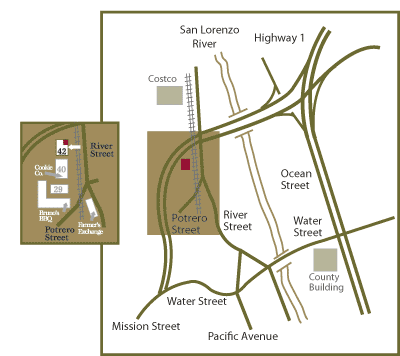Acupressure Self-Care for Ankle Pain: Shen Mai “Extending Vessel” (Urinary Bladder 62)
Locating Acu-point UB 62
Acupressure Technique for UB 62
Other Properties of UB 62
Advice for Ankle Pain
Ankle pain, whether acute or chronic, can be treated through stimulation of acu-point Shen Mai “Extending Vessel” Urinary Bladder 62 (UB 62), located below the lateral malleolus (the outer projection of the “ankle bone” at the base of the fibula). Acupressure at UB 62 can help in the acute stage (first 72 hours) of mild-to-moderate ankle sprains, as well as with the chronic achiness that can persist from an old or incompletely-healed sprain. Acupuncture with electro-stimulation (electro-acupuncture) at UB 62 can have similar beneficial effects on the ankle.
Locating Acu-point UB 62
Find the large protruberance (malleolus) at the base of the outer shin bone (the fibula). Slide your fingers down towards the ground and slightly backwards towards the heel, feeling first a cleft, then another smaller bump, below which is a shallow tender depression. Continuing towards the ground, your finger will move off the heel bone and into another depression where the bottom of the heel bone transitions into the soft tissue (plantar fascia and muscles) of the sole of the foot.
This entire path you have just traced can be considered UB 62 (though different textbooks and traditions will focus on just one spot within this zone). Part or all of UB 62 may be tender, especially if you have sprained your ankle. UB 62 follows the path of the calcaneo-fibular (CF) ligament, which is frequently stretched until it becomes lax or torn when the ankle “rolls” outward (ankle inversion sprain). The CF ligament, by binding the fibula to the calcaneus, restrains motion at the talo-fibular joint and assures lateral stability of the ankle. A sprained, stretched out or weak CF ligament is a risk for hypermobility of the ankle joint, which can lead to more sprains and become a vicious cycle of instability, injury, and joint degeneration.
Acupressure Technique for UB 62
Massaging the CF ligament at UB 62 stimulates the tissue to tighten and shorten up and build more fiber, which over time can help to re-stabilize the ankle. To perform cross-fiber acupressure at UB 62, visualize and feel the CF ligament as a vertical strap about 1 cm wide running from your outer “ankle bone” (fibular base or outer malleolus) to the calcaneus at UB 62. Direct your fingertips back-and-forth perpendicular to the line of the CF ligament fibers (towards your heel, then towards your toes). You may feel tenderness and even some pain as you roll your fiingertips over the CF fibers. The sharpness of the tenderness at UB 62 is an indicator of the degree of damage to the ligament–and that your acupressure is appropriately, and safely, stimulating it.
Other Properties of UB 62
UB 62 is a potent acu-point near the distal end of the Foot Tai Yang (literally, “Greater Yang”) acupuncture zone, also often translated as the “Urinary Bladder” (UB) meridian, probably because the UB meridian pathway runs up the back of the leg and through the urinary bladder to join the spine at the level of the spinal nerves that supply both the urinary bladder and the posterior leg.
The name “Extending Vessel” refers to UB 62’s double function as the Master Point for the Yang Motility acupuncture meridian, one of the Eight Extra acupuncture meridians that is said to have overall control of the body’s locomotion. UB 62 has a wide range of traditional indications including treatment of back pain and urinary bladder disorders when stimulated with acupuncture.
Advice for Ankle Pain
If you are having lateral ankle pain either chronically or after a sprain or injury, it is advisable to consult with a licensed acupuncturist or other primary health care professional. While mild ankle sprains/strains can heal well on their own, any significant swelling or bruising deserves medical attention as it can mask a complete ligament tear or even a fracture, which require the care of an orthopedic physician (I’ve had several patients walk into my office on ankles which turned out to be fractured when we were able to obtain x-ray imaging!).
Having trouble with ankle pain? For more information, you may contact us, or use our Request Appointment form.

